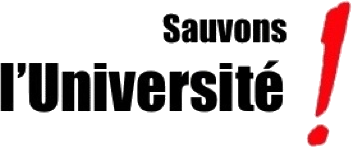Accueil > Revue de presse > Top Colleges, Largely for the Elite, David Leonhardt, The New York Times, (...)
 Top Colleges, Largely for the Elite, David Leonhardt, The New York Times, 24 mai 2011
Top Colleges, Largely for the Elite, David Leonhardt, The New York Times, 24 mai 2011
mercredi 25 mai 2011, par
The last four presidents of the United States each attended a highly selective college. All nine Supreme Court justices did, too, as did the chief executives of General Electric (Dartmouth), Goldman Sachs (Harvard), Wal-Mart (Georgia Tech), Exxon Mobil (Texas) and Google (Michigan).
Like it or not, these colleges have outsize influence on American society. So their admissions policies don’t matter just to high school seniors ; they’re a matter of national interest.
More than seven years ago, a 44-year-old political scientist named Anthony Marx became the president of Amherst College, in western Massachusetts, and set out to change its admissions policies. Mr. Marx argued that elite colleges were neither as good nor as meritocratic as they could be, because they mostly overlooked lower-income students.
For all of the other ways that top colleges had become diverse, their student bodies remained shockingly affluent. At the University of Michigan, more entering freshmen in 2003 came from families earning at least $200,000 a year than came from the entire bottom half of the income distribution. At some private colleges, the numbers were even more extreme.
In his 2003 inaugural address, Mr. Marx — quoting from a speech President John F. Kennedy had given at Amherst — asked, “What good is a private college unless it is serving a great national purpose ?”
On Sunday, Mr. Marx presided over his final Amherst graduation. This summer, he will become head of the New York Public Library. And he can point to some impressive successes at Amherst.
More than 22 percent of students now receive federal Pell Grants (a rough approximation of how many are in the bottom half of the nation’s income distribution). In 2005, only 13 percent did. Over the same period, other elite colleges have also been doing more to recruit low- and middle-income students, and they have made some progress.
It is tempting, then, to point to all these changes and proclaim that elite higher education is at long last a meritocracy. But Mr. Marx doesn’t buy it. If anything, he worries, the progress has the potential to distract people from how troubling the situation remains.
When we spoke recently, he mentioned a Georgetown University study of the class of 2010 at the country’s 193 most selective colleges. As entering freshmen, only 15 percent of students came from the bottom half of the income distribution. Sixty-seven percent came from the highest-earning fourth of the distribution. These statistics mean that on many campuses affluent students outnumber middle-class students.
La suite sur le site du New York Times


